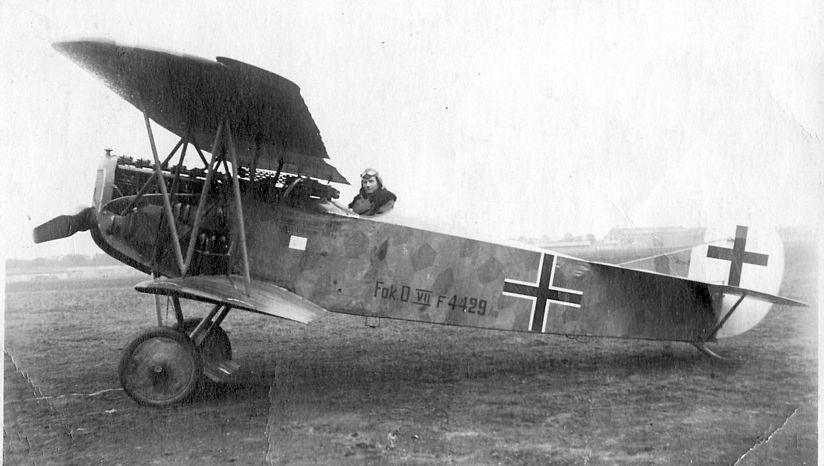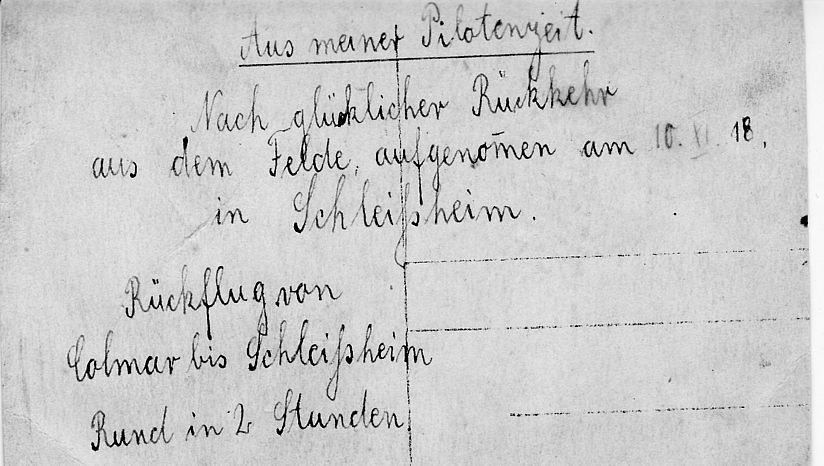Military aircraft of WW I
Fokker D VII
The Fokker D VII was among the best fighter planes in the First World War.

Fokker D VII at Schleißheim, 1918, Postcard front page. Photo: Deutsches Museum

Backside of the postcard. Photo: Deutsches Museum
With its strong climb performance and good flying characteristics, such as resistance to tailspin and excellent manoeuvrability, the Fokker D VII was among the best fighter planes in the First World War. By the time of the Armistice on November 11, 1918, more than 760 planes were built and deployed to 48 German fighter squadrons. The Fokker D VII was highly respected by the enemy. It was the only plane explicitly mentioned in the Armistice agreement. Every plane of this type had to be turned over to the Allies.
The plane on display was flown by the Dutch navy (MLD) until 1937. It has a few modifications to distinguish it from the planes flown in the First World War. For instance, the fuselage fairing in front of the cockpit was changed, and the plane does not have the typical weaponry of a fighter, consisting of two machine guns above the engine. The paintwork shows the typical camouflage markings of German aircraft in the First World War, and the serial number is fictional. It was found by a US Army unit in a shed in Vilsbiburg, Lower Bavaria, in July 1945 and has been part of the Deutsches Museum's collection since 1948. The individual history of the exhibit between 1937 and 1945 is currently being researched in a cooperation project between the Deutsches Museum and the Dutch Stichting Koninklijke Defensiemusea. From July 2025, the Fokker D.VII will return to the Netherlands, initially on loan for five years, where it will be displayed at the Military Museum in Soesterberg.
Technical specifications:
- Manufacturer: Fokker-Flugzeugwerke GmbH, Schwerin, Germany, 1918
- Wingspan: 8.9 m
- Take-off mass: 875 kg
- Maximum speed: approx. 200 km/h
- Power plant: Daimler IIIa six-cylinder in-line engine
- Power rating: 118 kW
